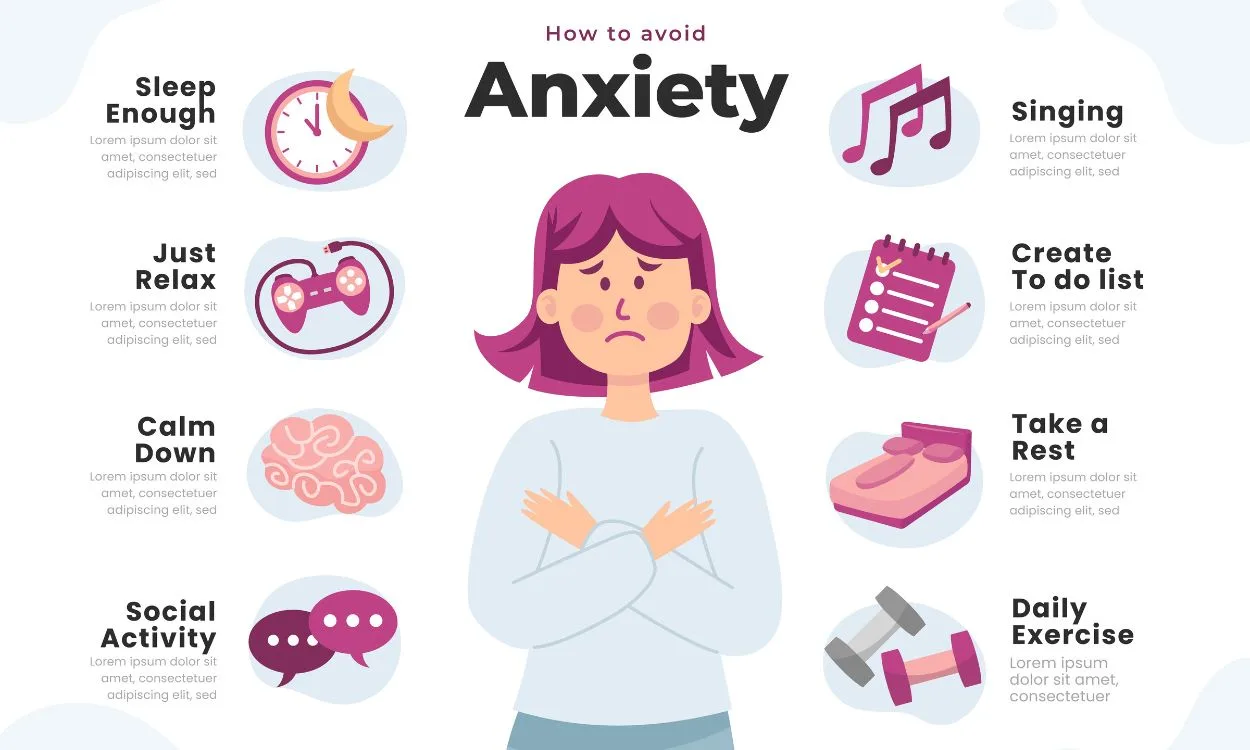Anxiety can feel like a beast lurking in the background of our minds, waiting for the right moment to pounce. Whether it’s triggered by a stressful situation, a looming deadline, or simply the unpredictability of life, anxiety can be overwhelming. Fortunately, there are effective ways to manage and even tame this beast. In this post, we’ll explore practical strategies that can help you gain control over anxiety and navigate through life with greater calm and confidence.
1. Understanding Anxiety
Before jumping into solutions, it’s important to understand what anxiety is. Anxiety is a natural response to stress, and it can actually be beneficial in certain situations. It alerts us to potential dangers or challenges, preparing us to take action. However, when anxiety becomes chronic or disproportionate to the situation, it can interfere with daily life and well-being.
Anxiety manifests physically and mentally—racing thoughts, a pounding heart, sweaty palms, and a sense of dread. It can make even the simplest tasks feel overwhelming. But knowing that anxiety is a common and manageable condition can help take the edge off when it strikes.
2. Mindfulness and Meditation
One of the most powerful tools for managing anxiety is mindfulness. Mindfulness is the practice of staying present in the moment, without judgment. It encourages a non-reactive awareness, which can be especially helpful when anxiety starts to take over.
A simple way to practice mindfulness is through breathing exercises. Focus on your breath—inhale deeply for a count of four, hold for four, and exhale for four. This can help calm the nervous system and create a sense of grounding in the present moment.
Meditation, especially guided meditation, can further enhance this practice. Regular meditation can train the brain to stay focused and relaxed, helping to reduce the frequency and intensity of anxious thoughts.
3. Cognitive Behavioral Therapy (CBT)
Cognitive Behavioral Therapy (CBT) is a highly effective treatment for anxiety. It involves identifying and challenging negative thought patterns and replacing them with healthier, more realistic thoughts. CBT helps you recognize when your anxiety is driven by distorted thinking (e.g., catastrophizing or overgeneralizing) and teaches you how to reframe those thoughts.
For example, instead of thinking “I can’t handle this,” try replacing it with “This situation is difficult, but I’ve managed challenges before, and I can handle this too.” By making this shift, you can reduce the intensity of your anxiety and improve your ability to cope with stress.
You can learn CBT techniques on your own through self-help books or apps, or you may find it helpful to work with a therapist trained in CBT.
4. Physical Activity
Exercise is a well-known stress reliever and an excellent way to manage anxiety. Physical activity releases endorphins, which are the body’s natural mood elevators. It also reduces the production of stress hormones like cortisol, helping to regulate the body’s response to anxiety.
You don’t need to engage in intense workouts to benefit from exercise. Even a brisk walk, yoga, or light stretching can provide relief. Find an activity that you enjoy and can commit to regularly, whether it’s dancing, swimming, or just going for a walk in nature.
Exercise also promotes better sleep, which is crucial for mental health. A good night’s sleep can restore your energy, improve your mood, and make it easier to handle the challenges of the day.
5. Journaling for Clarity
Writing down your thoughts can be a powerful way to manage anxiety. Journaling allows you to process your emotions, gain insight into the root causes of your anxiety, and reflect on the things you can control. When anxiety feels overwhelming, putting pen to paper can help you step back and gain a sense of perspective.
Try writing about what’s triggering your anxiety, what you’re feeling physically and emotionally, and any potential solutions you can think of. Sometimes, the act of writing things down is enough to release some of the tension and help you think more clearly.
6. Create a Calming Environment
Your environment plays a significant role in your mental well-being. A cluttered or chaotic space can contribute to feelings of stress and anxiety, while a calming environment can promote relaxation. Take a few moments each day to tidy up and create a peaceful atmosphere around you.
Incorporate calming elements such as soft lighting, soothing scents (like lavender or eucalyptus), and comfortable seating. Having a designated space for relaxation or mindfulness practice can serve as a sanctuary when you need to reset.
7. Healthy Lifestyle Choices
Taking care of your physical health can have a profound impact on your mental well-being. A balanced diet, regular exercise, and proper sleep all contribute to a more resilient and calm state of mind. Caffeine and sugar can exacerbate anxiety, so try to limit their intake and opt for healthier, more calming alternatives.
Additionally, managing stress through relaxation techniques like deep breathing or progressive muscle relaxation (tensing and relaxing different muscle groups) can help prevent anxiety from spiraling out of control.
8. Seek Professional Help When Needed
If anxiety becomes persistent or overwhelming, reaching out for professional help is a crucial step. A therapist in South Jordan can offer personalized tools and coping strategies to address your unique needs. In some instances, medication may be recommended to help manage anxiety, but this should always be discussed with a healthcare provider to determine the best course of action.
In Conclusion
Anxiety may feel like a beast, but with the right tools and techniques, it can be tamed. By incorporating mindfulness, exercising regularly, journaling, and making healthy lifestyle choices, you can regain control over your anxiety and build resilience against future stressors. Remember, it’s a journey, not a quick fix, so be patient with yourself as you find the strategies that work best for you.














